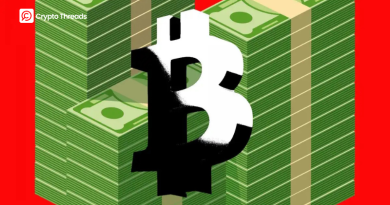Beginner’s Guide to Cryptocurrency Trading: Understanding Different Order Types
Introduction to Cryptocurrency Trading
Cryptocurrency trading has become increasingly popular, with more and more people looking to invest in and trade digital assets. However, for beginners, the world of cryptocurrency trading can feel overwhelming and confusing.
One of the most important aspects of trading is understanding the different order types available. Think of order types as different tools in your toolbox – each tool serves a specific purpose and is suitable for particular situations.
In this guide, we will explore the various order types and how to use them to maximize profits and minimize losses. Whether you are new to trading or looking to expand your knowledge, this guide will provide the essential information you need to get started.
Essential Cryptocurrency Order Types Explained
When entering the world of cryptocurrency trading, understanding different order types is extremely important. These order types are like different strategies you can use depending on your goals and market conditions.
Market Orders: The Instant Solution
A Market Order is the simplest type of order and executes immediately at the best available price in the market. Imagine you’re shopping and want to buy something right away – you accept the store’s current price without negotiating.
Market Orders are perfect for traders who prioritize speed and completing the transaction over price control. When you want to buy or sell immediately, this is your best choice. Think of it as the “buy now” button in online shopping – you get what you want instantly, but you pay whatever the current price is.
Limit Orders: Setting Your Target Price
A Limit Order gives you more control by allowing you to specify exactly what price you want to buy or sell at. This is like setting a target price and waiting for the market to reach that level.
For example, if Bitcoin is currently at $50,000 but you only want to buy when the price drops to $45,000, you can place a Limit Order at $45,000. The order will only execute when Bitcoin’s price actually reaches this level.
However, the important thing to remember is that your order might never execute if the market never reaches your specified price. It’s like fishing – you set your hook at the right depth, but there’s no guarantee the fish will bite.
Stop Orders: Your Automatic Safety Net
A Stop Order introduces a conditional element to trading, where the order only executes when an asset reaches a predetermined stop price. This type of order is extremely useful for risk management.
Think of a Stop Order as an automatic “alarm bell.” When the price reaches the level you’ve set, it triggers a buy or sell order to protect you from larger losses or to protect profits you’ve already made.
For example, if you bought Bitcoin at $50,000 and set a Stop Order at $45,000, a sell order will be triggered if Bitcoin’s price drops to $45,000, helping you limit your losses. It’s like having a safety net that automatically catches you if you fall.
Stop-Limit Orders: The Best of Both Worlds
A Stop-Limit Order combines features of both Stop Orders and Limit Orders, creating a two-tiered approach to price specification. This allows you to set a stop price to activate the order and a limit price to establish boundaries for order execution.
This order type provides a refined balance between risk management and price targeting. It gives you more control over execution price compared to regular Stop Orders. Think of it as a more sophisticated safety net that not only catches you when you fall but also ensures you land exactly where you want to.
How Order Types Impact Your Cryptocurrency Trading Success
The choice of order type has a substantial impact on cryptocurrency trading, as it shapes the trader’s approach to executing their market strategy. Understanding this impact is like learning the difference between various driving techniques – each one gets you to your destination, but the journey and results can be quite different.
Understanding Market Order Impact
Grasping the nuances of Market Orders is crucial for your trading success. They execute trades instantly at the current market price, which is beneficial when timing is everything. However, traders must be aware of a phenomenon called “slippage” – this can result in your trade being executed at a less favorable price than you expected.
Think of slippage like ordering food during rush hour at a popular restaurant. You might expect to pay the menu price, but due to high demand and limited supply, you might end up paying more or getting less than expected. This particularly happens in markets with low liquidity or during periods of high volatility.
Understanding slippage emphasizes the importance of considering market conditions and order size when choosing to use a Market Order. It’s like checking traffic conditions before choosing your route – the same destination might require different strategies depending on current conditions.
The Strategic Advantage of Limit Orders
In contrast, Limit Orders empower traders with the ability to set their desired entry or exit price, thus avoiding slippage entirely. This precision comes with the trade-off of potential non-execution if the market fails to meet your target price.
Think of Limit Orders like making a reservation at a restaurant for a specific time and price. You get exactly what you want when the conditions are right, but if the restaurant is fully booked at your preferred time, you might not get seated at all. Limit Orders represent a strategic choice for those willing to trade the immediacy of Market Orders for the possibility of a more favorable price, reflecting a patient and calculated approach to trading.
The Risk Management Power of Stop Orders
Stop Orders and Stop-Limit Orders further refine your ability to manage risk effectively. A Stop Order sets a trigger price for executing a Market Order, while a Stop-Limit Order adds a limit condition to ensure execution within a specified price range.
The strategic deployment of these order types can safeguard your portfolio against drastic market swings, serving as a critical component of risk management in the unpredictable landscape of cryptocurrency trading. It’s like having different types of insurance policies – each one protects you in specific scenarios, and together they provide comprehensive coverage for your investments.
How Trading Orders Are Executed in Practice
The execution of trades within the cryptocurrency market depends on the type of orders traders use. Each order type offers a distinct mechanism for engaging with the market, influencing the execution outcome based on your goals and current market dynamics. Understanding how these orders operate is like learning the mechanics of different tools – each one works differently and produces different results.
The Mechanics Behind Stop Order Execution
Stop Orders provide insurance against adverse price movements by automatically triggering a trade at a specified stop price. While this can protect against significant losses, it’s essential to recognize that Stop Order execution can be influenced by rapid price changes that might lead to less favorable fill prices.
Imagine Stop Orders like an emergency brake in your car. When you hit the brake, the car will stop, but if you’re going downhill on ice, you might slide further than expected before coming to a complete stop. Similarly, in fast-moving markets, your Stop Order might execute at a price that’s worse than your stop price due to market gaps or rapid price movements.
Stop-Limit Orders include an additional limit price, which acts as a safeguard against executing a trade beyond a certain price threshold. This grants traders a higher degree of control over the execution price while managing risks associated with price gaps. Think of it as having both an emergency brake and a steering wheel – you can not only stop but also control where you end up.
Understanding Time-in-Force Conditions
Time-in-force conditions such as Good ‘Til Canceled (GTC), Immediate or Cancel (IOC), and Fill or Kill (FOK) dictate how long an order remains active in the market, which can significantly affect the likelihood and timing of execution.
GTC orders remain active until executed or manually canceled, offering persistence in pursuit of your target price. It’s like leaving a standing offer – “I’ll buy this if the price drops to my target, and I’ll wait as long as it takes.” This patience can pay off if the market eventually moves in your favor.
IOC and FOK orders address different needs entirely. IOC orders attempt immediate execution and cancel any portion that can’t be filled right away, while FOK orders demand complete execution or complete cancellation – no partial fills allowed. Think of IOC as “get me as much as you can right now,” while FOK is “give me everything I want or nothing at all.”
These time-sensitive instructions align with your strategic vision and market expectations, providing a structured approach to entering and exiting positions. Understanding these timing mechanisms is like learning when to be patient versus when to act decisively – both approaches have their place in successful trading.
Practical Application and Risk Management
Understanding these mechanisms can help you align your execution strategies with specific market scenarios, enhancing your ability to capitalize on market opportunities or protect your investments from volatility. This knowledge forms the foundation for mastering trade execution in the complex and fast-paced environment of cryptocurrency trading.
Think of successful trading like conducting an orchestra – you need to know when to use each instrument (order type) and how they work together to create harmony (profitable trades) rather than chaos (unnecessary losses). Each order type serves a specific purpose, and knowing when to use each one separates successful traders from those who struggle.
Remember that, like learning to drive a car, you need time and practice to become proficient at using these tools effectively. Start with the basics, understand each order type thoroughly, and gradually build your confidence through practice with small amounts of money before committing larger sums to the market.
By beginning with these fundamental concepts and gradually applying them in practice with small amounts of capital, you will build the confidence and skills necessary for successful cryptocurrency trading. The key is patience, continuous learning, and careful risk management as you develop your trading expertise.



